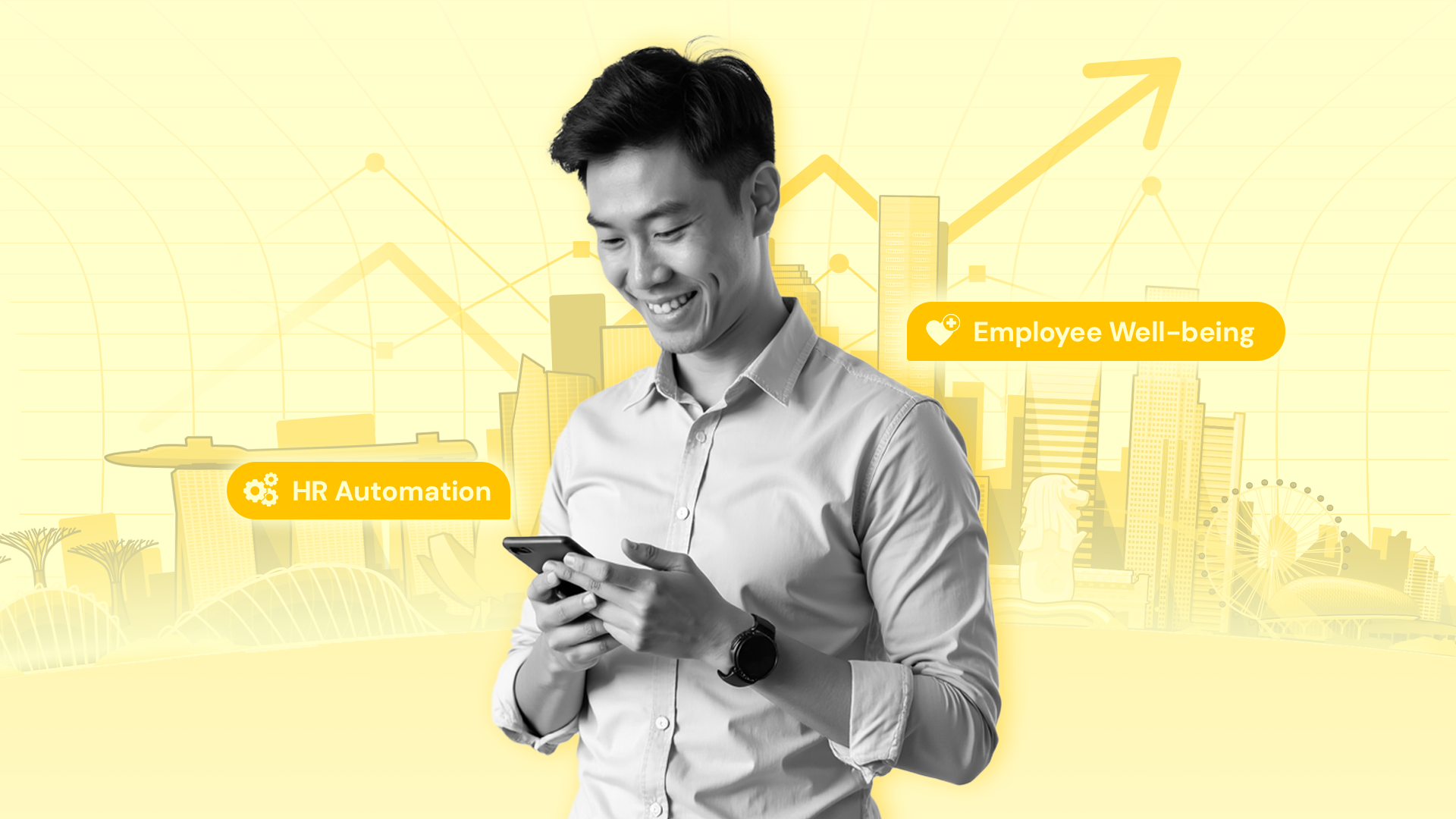In the light of a rapidly evolving labour market and increasing advances in HR trends and technology, traditional HR processes in Singapore have undergone a significant change. Workforce management is no longer limited to in-office HR teams, but rather require HR professionals to balance compliance expertise with technological proficiency, while also ensuring an engaged and motivated workforce.
HR Trends in Singapore in 2024
Considering the above scenario, here are some of the most notable emerging HR trends in Singapore in 2024:
1. HR Automation
Spurred by digitization and advances in AI/ML technologies, HR automation has become a topic of significant consideration in the HR landscape. Companies are adopting HRIS and HRMS software to make data management more efficient and automate core HR processes like recruitment and payroll processing.
AI integrated ATS and performance management software are increasing in popularity as the responsibilities of HR teams evolve with managing hybrid and global teams. Besides, employers have also realized that implementing advanced tech solutions and focusing on employee well-being would not only engage the younger generation of employees but also increase their productivity.
2. Emphasis on Talent Acquisition and Retention
While coping with the impacts of a post-pandemic labour market, employers in Singapore are struggling to find skilled labour for most sectors of the economy. Although the overall employment outlook has increased to 44%, finding well suited talent to fill these positions are scarce. The talent scarcity in Singapore at 79% is significantly higher than the global average at 75%.
To meet this talent shortage, companies in Singapore are looking to not only hire new employees but also upskill and take active measures to retain older ones. Most companies are also looking to source and recruit talent from across the borders.
To combat this scarcity more sustainably, Singapore’s Ministry of Manpower (MOM) is encouraging the development of existing talent within the country by urging workers to upskill in essential areas like digital literacy. The MOM has also launched a digital platform called MyCareersFuture to help jobseekers find better matched jobs. The portal also has features to help working professionals map their career trajectory and determine the skills they need.
3. Rise of a Contingent Workforce
Posing as a band-aid solution to the national talent shortage, a contingent workforce has been steadily increasing in Singapore. Hiring temporary staff for briefs periods has allowed companies to meet acute skill shortages. It has also made scalability much easier. An HRD article cites a survey that found that 60% of companies in Singapore are presently using a contingent workforce, and 40% more intend in increasing the number of contingent workers they have.
This model is being facilitated by staffing firms that make sourcing both national and global talent much easier. Integration of AI and automation has also made recruitment and skill-based evaluations more efficient.
4. Hybrid Work Models
With outsourced labour practices and contingent teams, hybrid work models are continuing to serve as preferred alternatives to the traditional 40 hour in-office work arrangements. A Strait Times survey discovered that out of every 10 employees in Singapore, 8 employees would prefer flexible working arrangements.
And with statistically backed evidence for increased productivity with remote arrangements, 73% of companies intend on continuing remote to hybrid work arrangements for the foreseeable future. The Singaporean government is also involved in setting up policies to protect the rights of remote workers to ensure a positive working environment for them.
5. Focus on Employee Well-being
Manpower Singapore’s latest report on workforce trends recorded that the youngest generation of workers, who’ve been in the workforce for less than 10 years, valued work-life balance, employee engagement and career advancement.
Considering the importance of talent retention in a scarce labour market, companies must prioritize ensuring a positive and engaged work environment, while promoting a culture of professional growth. As upskilling initiatives are already being promoted by the government, companies facilitating this not only pose themselves as advantageous contributors to the nation’s long-term development goals but also ensure that their business also continues to grow.
6. Enhancing Workforce Diversity
Companies in Singapore are beginning to realize that initiatives like diversity and inclusion appeal to the younger workforce and can be instrumental in attracting potential talent. 71% of employers acknowledged that it also makes for a positive working environment. Besides, DEI initiatives are a great opportunity to tap into diverse talent, as well.
That’s why, companies are taking increasing measures to systematically implement DEI initiatives and measuring their impact. 88% of Singaporean companies also have budgets planned for implementing DEI policies.
In addition to this, the Singaporean government is also trying to eliminate the impact of gender inequality, especially in professional settings. By launching schemes to support professional development of women, the government is also making efforts to increase to participation of women in the workforce.
Summing Up
These trends shaping the Singaporean workforce require HR professionals to become active stakeholders in workforce planning and development. In addition to technological literacy, they must also hone their acumen to navigate these trends. By implementing strategies that can make the workforce adaptable to the present market conditions as defined by these trends, HR leaders can ensure their company’s growth for years. Did we miss any HR trends? Let us know in the comment section!





1 comment
This is a great insight into HR trends! Any HR professional interested in staying on top of Singapore’s changing HR landscape should read this article. Check it out!